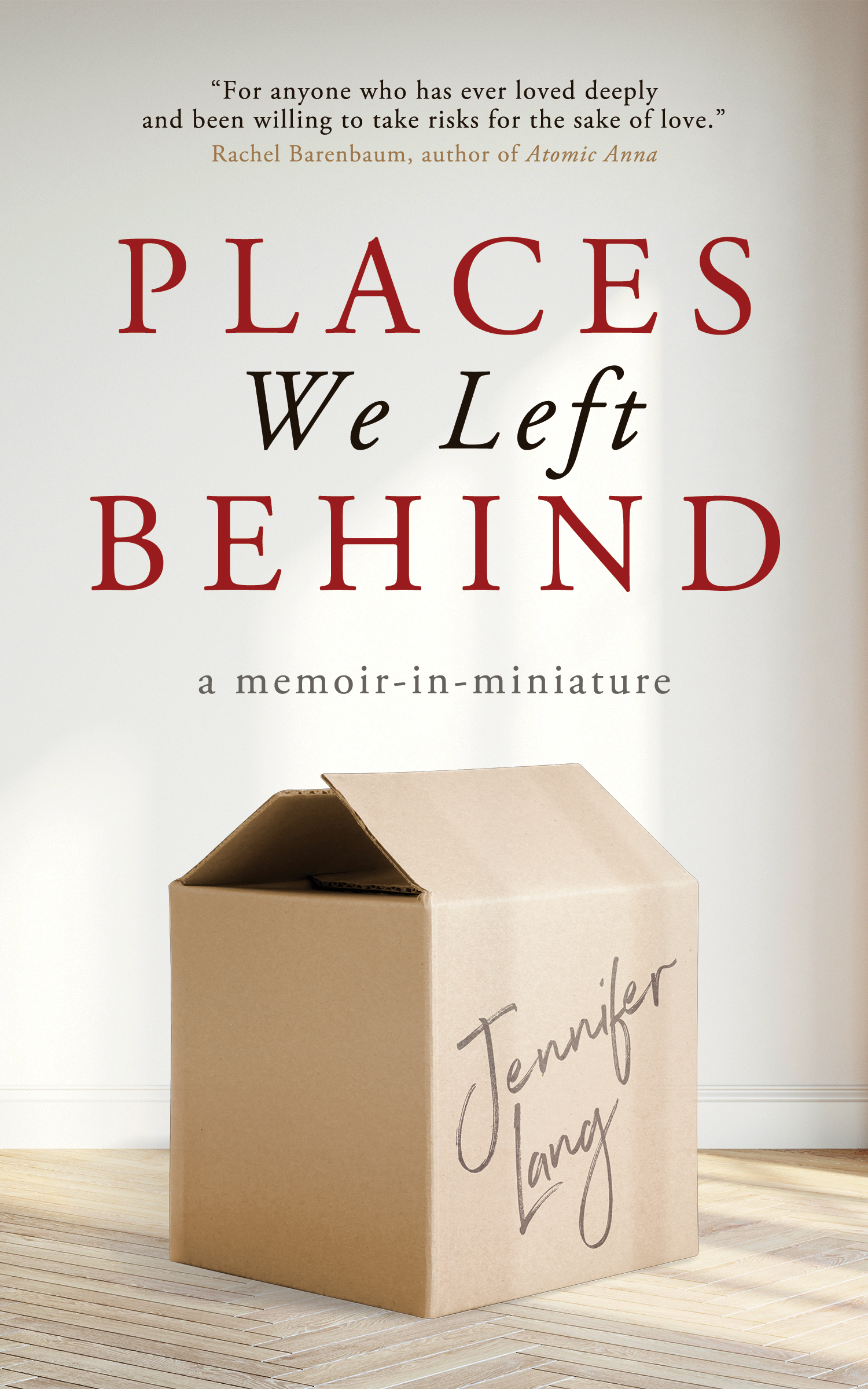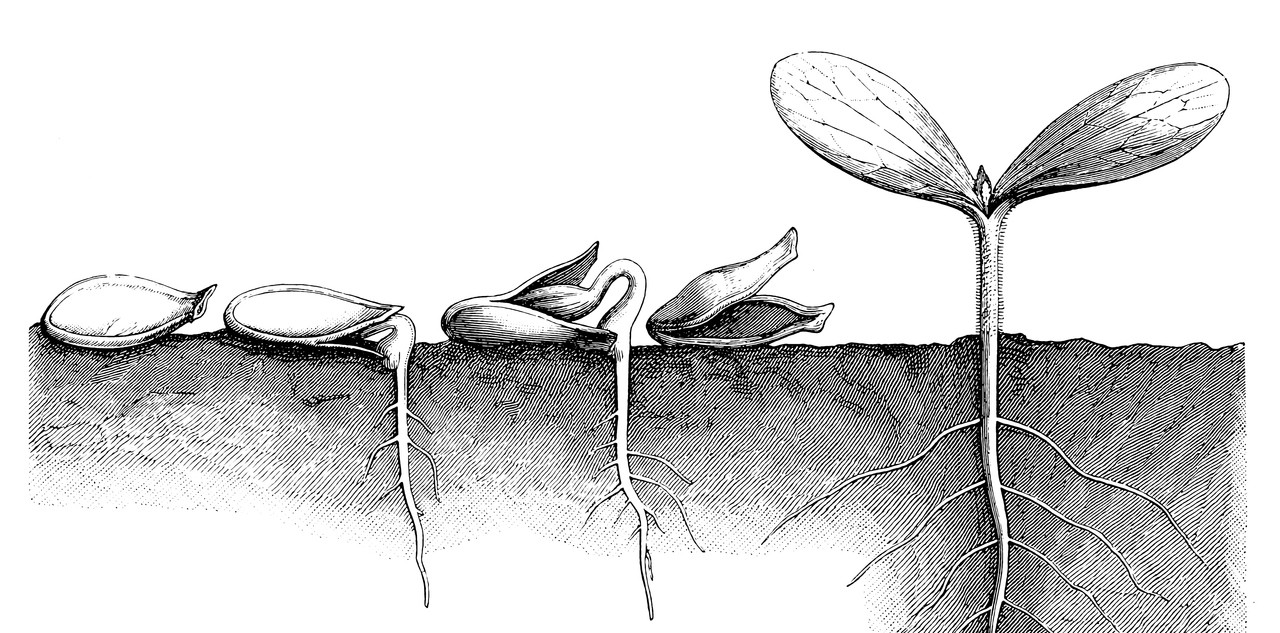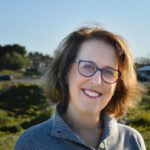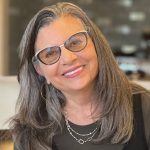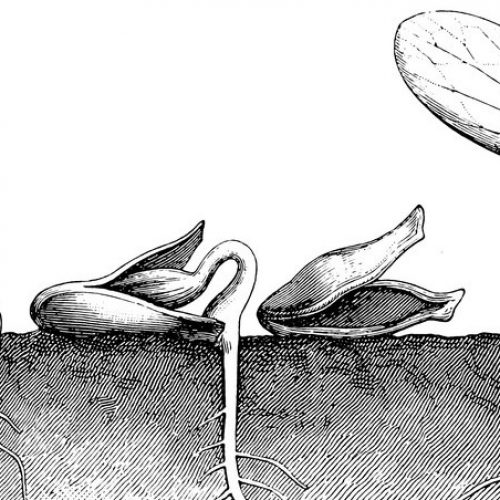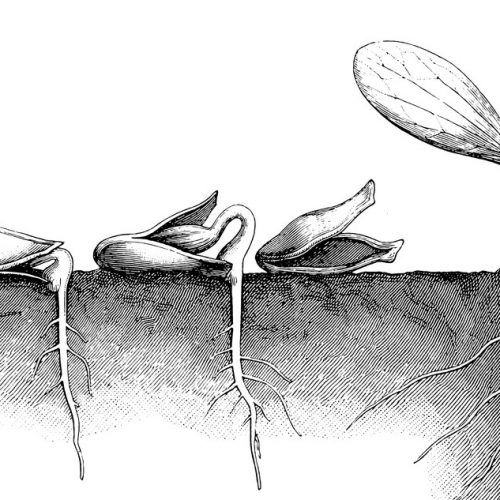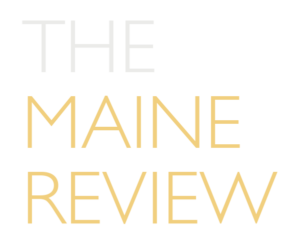Note: This interview was conducted in May 2023.
Jennifer Lang has vivid memories of mother-daughter pilgrimages to the Oakland public library when she was a child. She can hear the creak of the hardwood floor, her mom shushing her if she dared speak. She can feel her fingers touch the spines of beloved titles: From Ramona the Pest to Little House on the Prairie to Are You There God? It’s Me Margaret. These stories changed her inner landscape. She cannot recall a time when she was without a book in hand. And, while reading her favorite authors in English, she was also attending French class—a pilot program that her mother enrolled her in before elementary school until she could take it in school—the language that would lead her to France, and in an indirect way to her husband, Philippe.
Despite her love of story, English grammar rules confounded Jennifer; she couldn’t understand how to compose sentences that complied. After graduating from college, she worked as a bilingual assistant for a Jewish nonprofit in Paris where she wrote communiques for the Jewish communities in Europe in her native tongue. As she mastered French, English grammar began to click. Eighteen months later, after moving to Israel, she worked as a research assistant, copyeditor, and editor for various Anglo-centric organizations. As time passed and her linguistic prowess increased, she forgot how much she’d once struggled with writing. Since receiving her MFA in 2016, Jennifer has published widely. Based in Tel Aviv, she runs Israel Writers Studio and serves as an Assistant Editor for Brevity Journal. When not at her desk, she’s often on a yoga mat, practicing since 1995, teaching since 2003.
~Megan Vered, Radicle Interviewer
In her debut, Places We Left Behind: a memoir-in-miniature (Vine Leaves Press), Jennifer puts her marriage under a microscope, examining commitment and compromise, faith and family while moving between prose and poetry, playing with language and form, daring the reader to read between the lines. She tells their story of an American-born woman who falls in love with a French-born man during the First Intifada in Israel. Both 23, both Jewish, they’re very different: she’s a secular tourist, he’s an observant immigrant. She understands their relationship is far from perfect. Determined to make it work, the two of them spend the next 20 years rooting and uprooting their growing family, each in search of a place where they feel whole and home.
Megan Vered: What can you tell me about the genesis of this project?
Jennifer Lang: I love that you start with this question about the genesis. Makes me think about the Book of Genesis, the creation myth of both Judaism and Christianity, and the first words: In the beginning. It’s as if the genesis of my project is born of that book in which God creates the heavens and the earth in six days then rests on, blesses, and sanctifies the seventh. Because my book—about my husband and I searching for home and navigating our different beliefs in our shared religion—is the genesis of my story.
Vered: What about your own personal genesis? Where and how did you and your husband meet? Can you talk about the early phase of the relationship?
Lang: We met through a mutual French friend with whom I’d worked after graduating from Northwestern University, where I’d majored in Human Development and Social Policy, which enabled me to avoid any English class requirement. That’s how much I hated English! Philippe had gone to engineering school in France. In the spring of 1989, we all ended up in Israel for different reasons. Five weeks after I arrived—between my job in Paris and graduate school in New York—our friend invited me to an organized overnight Shabbat in Shoresh, outside of Jerusalem, with a group of French Jews, among them Philippe. Our flirting began immediately: playing shesbesh (backgammon) and reading the obsolete Hebrew newspaper for new immigrants, him testing/teaching me since he had already started learning the language.
Vered: According to your book, you never made it to New York to grad school. What happened?
Lang: First I deferred. For a few months, until Philippe found a full-time job in his field, we toyed with me going and him following, though we hadn’t thought through in what capacity (and I’d already experienced living as a foreigner in France and the very challenging and heavy hassle of obtaining a work visa). Then he got a job offer in Haifa where we were living, and I knew it meant he wasn’t going anywhere… and neither was I.
Vered: Did you originally set out to write your memoir vignette-style, in single-page chapters?
Lang: In 2015, midway through my MFA, I began writing our story. By the time I finished a year later, it was 95,892 words: longwinded, overwritten, and flat. Desperate for feedback, I hired a developmental editor, who, six weeks later, emailed seven pages of summary notes that included line edits and a strong recommendation to set the manuscript aside and let her comments sink in over time. I heeded her advice. A few months later, not long after Helen Macdonald’s H Is for Hawk was published, the British literary journal Mslexia put out a call for submissions: J is for… 300 words maximum. I opened my manuscript. Searched for the word “jury,” buried amongst another 900 words, about sitting on the suede sofa in our sunroom of our century-old house in White Plains, NY, debating our future like a jury of two. I whacked and whittled it to under 300 words. Short and succinct, it sang. The following month, the submission was K is for… 300 words. I returned to my text, found the word “kasher” and compressed. I went forwards to L and backwards to A, each time adhering to the word count limit. And each time the end result wowed me. After weeks of word-whacking, I ended up with a different number of vignettes for each letter and liked the organic asymmetry. But the new working title R Is for Restless: A Memoir of Marriage and Words was still unwieldy and the 67,591-word story spanned too many decades, lacking a strong narrative arc and pizzazz. I put it away.
Vered: Was your husband aware that you were writing about your marriage? Did he read drafts as you wrote, or did he only read the book once it was completed? What was his response the first time he read the book?
Lang: Yes, he knew I was writing about us because I’d asked his permission in 2015 when I started the project. That said, he didn’t read anything I wrote, no drafts, no finished stories, no printed pieces. He doesn’t care for true stories, whether memoirs or documentaries, because he knows the ending. I am in my own world when it comes to my writing life, very separate from our shared one. After I finished it, he still didn’t read it. He didn’t read it until a week before I had to send it to the developmental editor at Vine Leaves Press, when I told him it was his last chance for any big changes. It took him a long time to find the courage to open it. Said he was scared about what he’d find. Finally, he read it and was extremely relieved. He thought he’d be a villain but actually no one was. He understood the book is a love story between two people working really hard to overcome their differences.
Vered: That must have been a huge relief for both of you. William Zinsser, author of the classic guide On Writing Well, said that, since the 1990s, many memoirs have focused on victimhood rather than forgiveness. For me, memoir in its purest, most artistic form is not about villainization or victimization, but rather about seeking the universal messages contained in a life story. What is the burning message in this book for you?
Lang: Let me pause and acknowledge William Zinsser. I had the privilege to hear him speak at Hudson Valley Writers Center in Ossining, NY in 2006, where he shared unforgettable advice: “Be nice when you write. If you’re writing out of a place of revenge or anger, you’re writing for the wrong reasons.” Something I keep front and center at my desk.
For me, the burning message in this book is about holding onto your voice, not letting one person get swallowed by another, stronger, louder voice. Then again, it’s about identity and preserving your sense of self. Then then again, it’s about owning your part in your story. Then then again again, it’s about love—pure, plain, simple—and how much it is or isn’t okay to compromise your life/behavior/lifestyle/choices/dreams for that other person.
For my husband, the book is about overcoming major differences that at first seemed insurmountable. He is an engineer by training, so for him it’s been a series of very difficult challenges that required all our will to be resolved. He still wonders how we did it and describes it as a mix of extreme tenacity, deep love for each other, and a bit of a miracle.
Ultimately, I agree that memoir is about shaping your unique story into a universal experience, and the beauty is in facing your own humanity.
Vered: Isabelle Allende says, “A memoir is an invitation into another person’s privacy. You’ve written a personal book that holds a thread of tension between marital and political discord. While this is an interview about the craft of writing, can you speak to the interrelationship for you between writing the personal and writing the political?
Lang: They are inseparable for me. Because of where I live. Because they are part and parcel of this place. They are inevitable. They color our daily lives. They make us stay awake. They keep us engaged. They are the answer to any question word: who, what, when, where, why. But ultimately, my book is a personal story about one couple’s journey to find home.
Vered: I understand you reached a turning point in your writing when you started studying flash.
Lang: Yes. I took an online flash writing class with Kathy Fish. Wrote feverishly with hard, fast word count limits and thought-provoking constraints. Brief, mind-blowing moments from my little Israeli life poured forth; my fellow flashers suggested I write a memoir in flash about my ambivalence toward living in this complex country. I plodded forward, composing one story at a time, peering through Anne Lamott’s one-inch frame. Ditched my overwritten manuscript. Around this same time, after a writer-friend read it, she suggested I reframe my question and explore it less as a marital issue and more as an identity crisis. Fascinating. Time passed. I began anew—in compressed, clipped vignettes about my seven-year journey to reclaim my core self after returning to Israel.
Vered: People tend to consider the trajectory of writing a book as a linear endeavor when, as we know all too well, it is a long, winding, often circuitous road. Can you talk about the value of setting aside your manuscript, getting feedback from other writers, and using a developmental editor? As Mary Karr says, “Finally, put it aside. Put it out of your head at least a week. You want it to set up like Jell-O. And when you pick it back up, ask yourself, What haven’t I said? How might someone else involved have seen it differently?”
Lang: Setting aside my work was something I learned from Ann Hood. When revising, she suggests printing out a story when it feels done, taking it on a date, reading and making changes, inputting the changes and putting it away, not for a day or week but for weeks or months. Then, take it out and repeat. Repeat until landing on the cleanest, strongest, slickest manuscript, until you cannot look at it any longer. Putting away my manuscripts helped give me the mental space necessary to re-see them with fresh eyes and an open mind.
The developmental editors I worked with helped too. They pointed out things I hadn’t caught, whether holes to fill, areas to strengthen, or themes to explore. I shopped around to find them and asked for references before hiring them and feel it was money well spent.
Lastly, getting feedback from other writers I trust whose writing I admire also plays a big part in my journey. Maybe if I had more confidence, I wouldn’t be as needy, but for now, I need other eyes.
Vered: Speaking of feedback, what is the best feedback you got from another writer?
Lang: Well, feedback from a writer-friend is really what led to this book. She encouraged me to link my shorts by theme and submit to prose chapbook contests. I returned to the latest iteration of my longer manuscript and tightened it like a corset with what I thought was a strong narrative arc. During the submission process, I noticed the word experimental in the guidelines. Curious, I revisited my text. Remembered feedback from an earlier reader wanting to see my pro-con list about moving in with my boyfriend circa 1989, realized my vignette about zigzagging through the Old City in Jerusalem could mirror it in form. For weeks, I re-visioned each piece, reshaping each word, asking how I could relay the information differently, more interestingly, more visually. Funny that words did not suffice; the text begged for something different.
Vered: Now I am on pins and needles. What happened next?
Lang: Ten weeks after submitting to a small, indie Europe-based press (with a new title), I received the most beautiful email “OFFER OF PUBLICATION: Places We Left Behind” and a two-page love letter, pointing out the manuscript’s strengths and suggestions if I chose to lengthen it beyond the 8,643 words. Deep, sweet sigh.
Vered: Wow! What a great finale to your long, winding road. Let’s talk about your writing style. You are a master of word play and structure. You use any number of eye-catching, mind-exciting structures to draw us in—parentheses, lists, word repetition, word alignment, numbers, contrasting verbs. I’d love to hear more about your affinity for this structured play, where it comes from, and how you harness it?
Lang: During my MFA studies, I worked with four different mentors, each of whom offered me four different nuggets. Douglas Glover drilled into me the distinction between memoir (scene-driven) and essay (idea-driven), encouraging me to move away from scene; Patrick Madden showed me how to make associations and carry themes through essays; Connie May Fowler taught me to believe in myself and my “writing chops.” But Barbara Hurd opened my eyes to something altogether next-level remarkable. “Nimble-mindedness,” she wrote in the margins. “Be more playful.” To teach me about patterns, she assigned an essay with one long sentence and two shorts, which was later published. To help me loosen up, she had me cut up each section in “Things Lost, Things Found” and shuffle them to see what worked best where. At the time, I felt baffled, but now, seven years later, I’ve found the best treasure in the box and have no intention of returning or exchanging it. Because playing with the prose and form mirrors midlife and how I feel: free.
Vered: Your clipped writing style is sexy, humorous, bold, and self-questioning all at the same time. How did you find the voice for this book? What goes into putting this language on the page?
Lang: Thank you so much. When it’s your own words, you don’t see it the same way. Never saw myself as a sexy or humorous writer. That said, I admire writers who are funny, who take risks, who make themselves vulnerable without Hallmarking their prose. Think Brian Doyle, Amy Krouse Rosenthal (“You May Want to Marry my Husband”), and Lidia Yuknavitch (The Chronology of Water). But what makes me swoon are unique structure like Jennifer Lunden’s “Evidence, in Track Changes,” Lia Woodall’s “…,” Sarah Minor’s “A Log Cabin Square.” Some might see them as gimmicky, contrived, but I see deep, never done. It makes me think of Alice Walker in an interview with Writer’s Digest: “[Y]ou have a right to express what you see and what you feel and what you think. To be bold. To be as bold with your vision as you can possibly be.”
As for voice and language, I’m capable of writing 90K words, but if I didn’t want to turn the page because the voice wasn’t interesting, the language not alive, what would a reader do? My only way out—chop and chisel—like a sculptor.
As someone who has moved and started over too many times, I remind myself about the potential to grow from the numerous iterations, the changes in my manuscript, in my style. That change keeps me awake, prevents me from complacency, reminds me again and again about the beauty of beginner’s mind.
Vered: The beauty of beginner’s mind. What does this mean to you?
Lang: Approaching the blank page as if for the first time. Or the yoga mat. Or the middle of the manuscript. Or downward facing dog. Or the Old City of Jaffa. Or the Old City of Jerusalem. Or. Or. Or. Trying to see X with wonder. To approach Y with curiosity.
Vered: Writers often say the best way to edit your work is to strengthen and specify your verbs. The dancer Martha Graham (one of my personal heroines) said, “Theater is a verb before it is a noun, an act before it is a place.” Can you relate this to your writing?
Lang: Absolutely, not only because of the writing but also because of the speaker. In my teens, I took modern dance classes in Oakland; in my twenties, in Haifa and Paris; in my thirties, back in Oakland. Martha Graham was our goddess, the guru of technique, the genius of all things body and movement. So befitting to reflect on her words.
Last March at AWP in Seattle, I attended Miciah Bay Gault’s panel on the Sentence is the Story: Reading, Writing, and Revising for Style and Sound. Each of the participants shared why they love the sentence, but Matthew Bell, author of Refuse to be Done, reiterated my sentiment: it’s all about the verb. Like many writing instructors, I encourage my students to examine the adverbs; over-adverbizing might mean the verb isn’t doing enough heavy-lifting or isn’t precise enough. I also suggest they keep open dictionary.com and thesauraus.com to look at a verb’s etymology, synonyms, definitions, antonyms to find the crown jewel. For me, if I can’t find what I’m looking for, I summon Barbara Hurd’s play and make it up.
Vered: How does the structure and ritual of your yoga practice interrelate with your writing practice?
Lang: Play is the main connection between the two practices. After five years of a more static, prop-based practice with my first teacher, Rodney Yee, I landed in a class with another Jennifer, who opened me up to the world of yoga-cum-dance called Vinyasa, a choreographed, fun, surprising flow. Unlike Iyengar or Ashtanga, students never know what’s coming in a flow practice. That not knowing on the mat is the same on the page. It’s organic, coming from inside, and moving through you.
Vered: You said that therapists, friends, family members and yoga instructors all influenced you to follow her own light while staying focused on keeping the marriage together. Can you talk about your personal faith practice and how it informs your everyday life?
Lang: While Philippe is an observant Jew who recites prayers daily and observes the sabbath, I don’t connect to the word faith as much as I do spirituality. For years, my yoga students have been telling me they consider me spiritual. Now, finally, I see it in myself. After a quick zigzag through the Carmel souk, upon arriving at the edge of the Mediterranean Sea, I feel overcome by awe. I hear the whish of the waves. The honking of cars. The Hebrew, French, Spanish, Russian, Italian, German, and so many other undetectable tongues humming in my ears. The whack of matkot, the quintessential Israeli paddle ball game. I smell dog’s urine, sunscreen, coffee. I sense sun or wind on my face, clouds over my eyes. I sink my feet into the soft, white sand. That sensory awareness has become my spiritual practice every time I step outside on the street, into the world.
Vered: Can you describe the struggles you faced while writing the book? How did you deal with them? Did your spiritual practice help?
Lang: The struggles were so real—and so unexpected. Seven years ago, still in grad school, I confronted obstacles that made me question my intention: “What Do I Tell My Teens About My Memoir?,” “Filling in the Memoir Holes,” and “Why My Memoir Hit a Wall.” But the worst were my swirling, bursting emotions, bordering on despair, as I relived some of the hardest conversations and hurtful comments and disconcerting truths of our marriage. At times I retreated; others, I lashed out at Philippe. While my mentors encouraged me to write this story, they failed to tell me the price I might pay to take this journey again, alone.
Probably what helped me most was a combination of different forces: trips abroad, specifically home, where I confided in girlfriends who knew my struggles, who knew Philippe, who gave me perspective, plus a dozen or so sessions with a talk therapist in Israel, where I felt heard and seen, where I cried one of my deepest cries, where I felt put back together like Humpty Dumpty.
Vered: In a sense you experienced a double dose of alone. Being a writer is solitary in and of itself and then you felt alone as you revisited the story of your marriage. To what extent and in what way is memoir an antidote to the universal human experience of suffering in silence?
Lang: That is such an interesting way to think about it and yes, it was a double whammy. I actually think the writing isn’t the issue as much as reading it out loud when I get closer to the edit stage. Sometimes I would close my office door and read and tear up—alone. But now, all these years later, knowing those words and those passages will be read by others, hopefully strangers (as in people I don’t know will buy my book, not just friends or family), I feel a strange connection, knowing or hoping my words might resonate with them. Does that answer your question?
Vered: Yes, and this once again accentuates the pursuit of the universal message. When I spoke with Jeannine Ouellette about the use of literary constraints she said, “The idea is, limitations can jostle us out of familiarity and into new territory, propel us away from our usual creative stomping grounds.” Can you talk more about how as writers we can break out of our own patterns?
Lang: Two ways to learn our patterns in our writing: share our work with others and read our work aloud. Two ways to break out of our patterns: read outside our genre/style and take a class in another genre/style. That said, the most effective way to learn and break our own patterns is through mindfulness. Notice your tendencies. Your sentence structure. Where and how you start your stories. If you stick with description or avoid dialogue. Notice other people’s writing that you admire and ask yourself why/what/how?
I recently completed an eight-week introduction to mindfulness. At the first meeting, our instructor defined it as “intentionally paying attention to whatever arises in the present moment with kindness/without judgment.” Sounds easy—but it’s not. My thoughts are 24/7 judgy, my lens always akimbo. So the trick is to craft a story to the best of your abilities and revise it while stopping, sitting, slowing down, and acting mindfully, noticing with beginner’s mind, and not judging yourself.
Vered: You spoke earlier about navigating different beliefs in a shared religion. Typically, when two people of the same religion marry, it is seen as a fait accompli, but your approach and your husband’s approach to religion sparked a great deal of conflict. Can you speak to the way you each navigate being Jewish and how this influences your search for home?
Lang: I grew up with a strong Reform identity and a close connection to Israel. We ate pork chops and apple sauce, cheeseburgers, and shrimp. We went to temple for Rosh Hashanah and Yom Kippur. But Shabbat meant occasional Friday night dinners with my grandparents, who brought filet mignon steak for my father to barbeque, and dressing in white and doing Israeli folk dancing during summer camp. It didn’t involve god, laws, or restrictions. Those came later, first with my sibling then with my marriage.
Home and religion were intimately connected for Philippe and me. In choosing where to live, we had to consider the Jewish package—from walking distance to synagogue options to driving distance to private day schools, from buying kosher meat to eating in kosher restaurants. Had we stayed in Israel to raise children it might have been less complicated, but we’ll never know. Leaving [Israel] led to a conditional clause: if I got country (which I did), then he got religion (which he did).
For Philippe, the basis of living a Jewish life is learning, praying, and following the mitzvot/commandments. In his opinion, the most important one is to live in Israel.
Vered: I imagine that people will read this book and think, how can two people from the same culture have so much conflict? How would you answer that question? Is marriage, at its roots, a cross-cultural experiment?
Lang: I’ve thought about this a lot over the years. How can two people who have so many things in common be so different? Neither one of us expected this. I spent decades pointing a finger at my husband, victimizing myself. He asked me to be someone I wasn’t, do something I didn’t want to do… but thirty years later, I finally understood, during the writing of this book, that I was also to blame. I gave in to him and up on myself.
When two people enter a relationship, they’ll most likely hit moments when someone has to cede. If both refuse, they’ll reach an impasse. Likewise, if the same person always yields, resentment will build. The issue with religion, especially Judaism, is the black and whiteness of the practice. An observant Jew cannot cede if it means breaking the law.
In my forties, I befriended two secular Jewish women married to observant men who never changed their lifestyles while raising children. Maybe if I hadn’t given in and had instead stood my ground and preserved my sense of self, we might have struggled less. Maybe not?
Vered: In the chapter “Heavy,” you write, “…we fold our anger into the creases of our shirts and tuck it into the hems of our pants, making our suitcases overweight.” How did you as a couple overcome the heaviness of this anger?
Lang: Philippe says that I let it out and he kept it inside, that we kind of neutralized each other, which helped us both. My answer is therapy. Really good therapy.
Vered: While this book is about marriage, home, identity, and faith, it is also about turning points, the decisions we make, why we make them, and the consequences of those decisions. Which was the most unsettling turning point for you? And which was the most uplifting?
Lang: The most unsettling—lowest of all lows—was our 20th wedding anniversary in the chapter “Conjugation.” The most uplifting was “me!” (Now anyone reading this will have to buy the book and read it to know what happened.)
Vered: When emergency sirens go off in the movie theater and the two of you must place gas masks over your faces, you write, “I married this place as much as I married this person.” What does it mean to marry a place?
Lang: I like the way Philippe once worded it: “Israel is intense. In Israel, you can’t just live for yourself and ignore what happens around you.” In my words, I felt like marrying a man who claimed that country as home with no intention of leaving meant I was there for life. It was a two-for-one deal whether or not I wanted it.
Vered: I love that your therapist said, I can give you the flashlight. But I can’t walk you out of the tunnel. What did it take for you to exit that tunnel?
Lang: Faith—and for me to use that word, well, you know I am not a total heathen. But unlike the way most people might associate that faith in a god, for me it was faith in Philippe. Faith in us. In our commitment to each other and to the beautiful, complicated family we created.
Vered: It was a pleasure to speak with you about craft, faith, perseverance, inspiration, and marriage. What is on the horizon in your writing life?
Lang: On my short horizon is my second book, Landed: A yogi’s memoir in pieces & poses, [to be published October 15, 2024] with Vine Leaves Press. Giving birth to a book, it turns out, is a full-time job. I am in deep for another 24-36 months. When a friend asked if I was planning my next memoir, I laughed. I told her two is enough. Plus, I’ve finished wrestling. Found my inner peace. Feel quiet inside. And every good memoirist needs to wrestle to write. So, what is next? Having been inspired by reading Jasmin Darznik’s The Bohemians, I am thinking of trying my hand at historical fiction based on my grandparents’ immigration from Eastern Europe to San Francisco in the 1920s.
Read Jennifer Lang’s essay “Simple Question“
